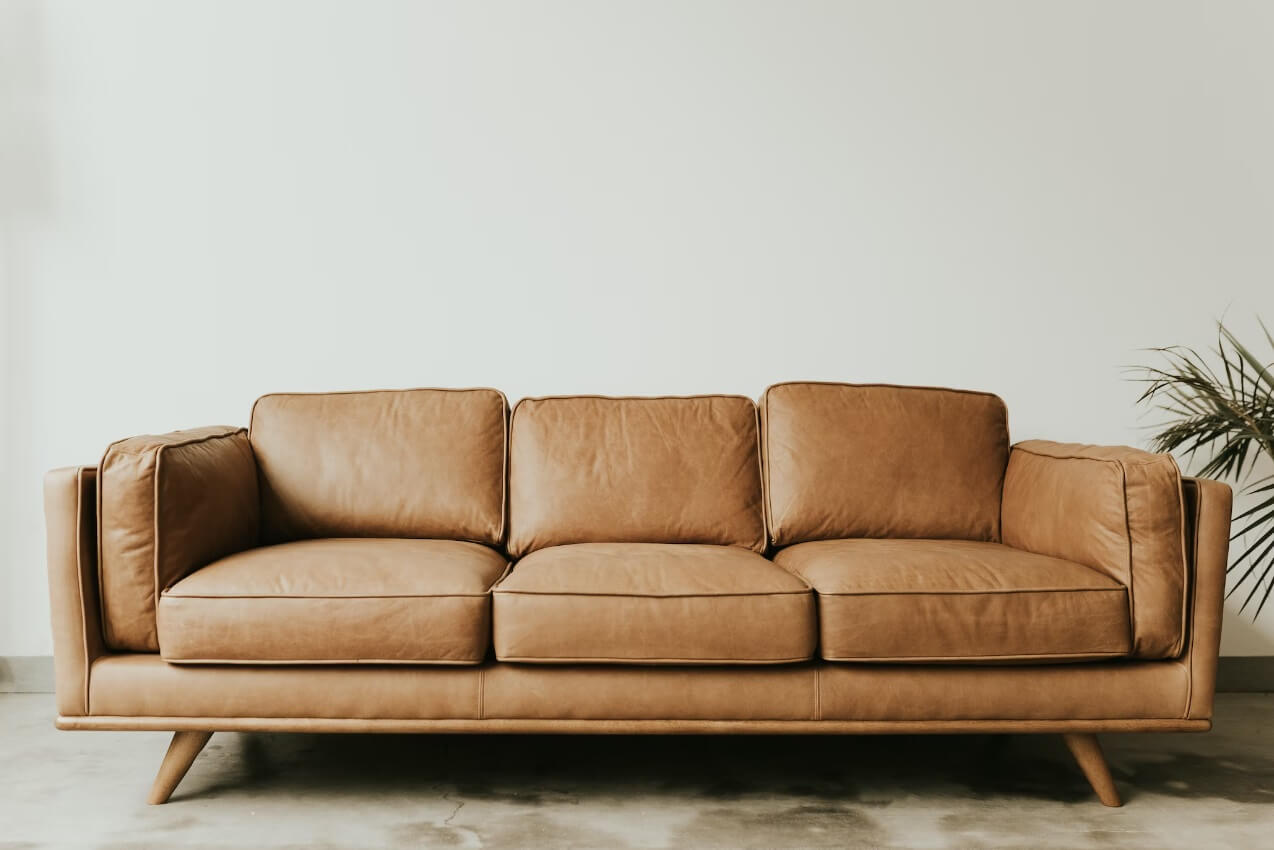Choosing the perfect sofa for your living space is more than just a matter of picking colors and styles; it's about understanding the material benefits, longevity, and how it fits into your lifestyle. The debate between leather and fabric sofas is longstanding, with each offering distinct advantages and some disadvantages. This guide delves deeper into the nuances of both options, covering durability, comfort, maintenance, style, cost, and additional considerations to help you make an informed decision that aligns with your preferences, budget, and lifestyle.
Leather Sofa vs Fabric Sofa
Durability and Longevity
Leather Sofas: Leather's reputation for durability is well-deserved. It resists punctures and tears better than fabric, making it a wise choice for homes with pets or children. Moreover, leather's ability to age gracefully, acquiring a unique patina over time, adds character and elegance to your living space. However, it can be susceptible to scratches and requires protection from direct sunlight to prevent fading and drying out.
Fabric Sofas: Advances in textile manufacturing have significantly improved the durability of fabric sofas. Some fabrics are treated with synthetic finishes for added stain resistance, or woven in a way that makes them more resilient to wear and tear. Nonetheless, they might not withstand the test of time as well as leather, especially in households with high usage or pets.
Comfort and Feel
Leather Sofas: The feel of a leather sofa is unique, offering a smooth, clean surface that adapts to the environment. Leather can feel cool in the summer and retains warmth in the winter, especially when used in temperature-controlled rooms. However, the comfort level can vary significantly depending on the grade and finish of the leather.
Fabric Sofas: The primary advantage of fabric sofas is their unparalleled comfort and warmth. The variety of textures—from plush velvets to soft cottons—means there's something for everyone. Fabric sofas can also offer better support and cushioning, depending on the construction and material of the cushions.
Maintenance and Care
Leather Sofas: Leather is relatively easy to maintain. Spills can be wiped away without much hassle, and periodic conditioning keeps the leather soft and prevents cracks. However, leather care products can add to the overall maintenance cost and effort.
Fabric Sofas: Fabric sofas may require more maintenance due to their susceptibility to stains and odors. While some modern fabrics are designed to be stain-resistant, regular vacuuming and professional cleaning are often necessary to keep the sofa looking its best. Removable covers can be a lifesaver, offering an easy way to deal with spills and stains.
Style and Personalization
Leather Sofas: Leather sofas add a touch of sophistication and luxury to any space. They are available in various colors and finishes, from sleek and modern to distressed for a more rustic look. However, the options for personalization might be somewhat limited compared to fabric sofas.
Fabric Sofas: Fabric offers limitless possibilities in terms of patterns, textures, and colors. Whether you're looking for something bold and contemporary or soft and traditional, fabric sofas provide the versatility to match any decor theme. This makes them particularly appealing for those who love to personalize their living spaces.
Cost Considerations
Leather Sofas: The initial investment in a leather sofa is typically higher than that for a fabric sofa. This cost reflects not just the material but also the craftsmanship involved in creating a durable, long-lasting piece. However, considering the longevity and ease of maintenance, leather sofas can offer better value over time.
Fabric Sofas: Fabric sofas are generally more affordable, making them a popular choice for those on a tighter budget. While they may not last as long as leather sofas, the lower cost means you can afford to update your living space more frequently.
Health and Allergies
Leather Sofas: Leather is a hypoallergenic material; it doesn't harbor dust mites, pet dander, or other allergens as fabric does. This makes leather sofas an excellent choice for allergy sufferers. However, some people might be sensitive to the chemicals used in the tanning process.
Fabric Sofas: Fabric sofas can collect and retain allergens, requiring regular cleaning to maintain a healthy living environment. However, some fabrics are treated to be hypoallergenic, which can mitigate this issue.
Environmental Considerations
Leather Sofas: The environmental impact of leather sofas is two-fold. On one hand, leather is a natural material that can be more durable and long-lasting than synthetics. On the other hand, the tanning process and the source of the leather (animal hides) raise concerns about sustainability and animal welfare.
Fabric Sofas: Fabric sofas can be made from a variety of materials, including synthetic fibers like polyester, which are derived from petroleum, and natural fibers like cotton or linen. The environmental impact varies greatly depending on the fabric's source, with natural, sustainably sourced fabrics being the more eco-friendly option.
Conclusion: Which is Better?
The choice between a leather and fabric sofa involves a balance of aesthetics, functionality, and personal ethics. Leather offers durability, ease of maintenance, and a classic look that ages well, making it a solid investment for many. Fabric, on the other hand, provides comfort, style versatility, and a cozy feel at a more affordable price point, though it may require more care and frequent updates.
Ultimately, the "better" choice depends on your personal preferences, lifestyle, and priorities. Consider how the sofa will be used, who will be using it, and your style preferences. Whether you choose the timeless elegance of leather or the warm versatility of fabric, ensure your choice reflects your personal style and meets your living needs.





